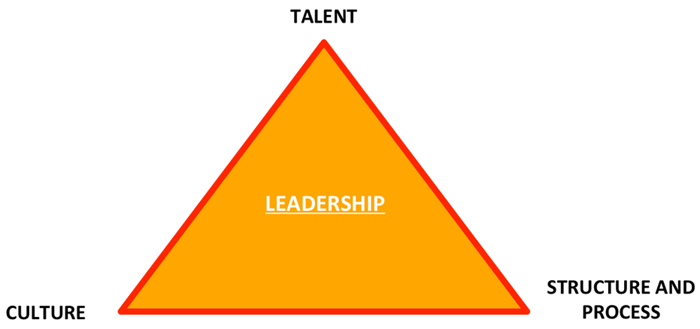The last two weeks I’ve given my thoughts on what Recruitment Managers or Learning Managers should focus on to add more value to their organization. Today I’m going to focus on the Head of HR, having been a head of HR from the tender age of 29, I do have, as you would expect, a couple of views on how a Head of HR can add significant more value.
First of all let me start with a simple definition of what the role of HR is in an organization:
HR supports line managers to maximize the performance of individual, teams, and the organization as a whole.
Where the line manager (read client) for the Head of HR is the CEO and/or his leadership team colleagues. And in supporting the line, HR has got four levers to focus on:
- Talent: Providing people with the right abilities and commitment to deliver results to the organization.
- Structure/Processes: Enabling the right structure and processes at the right costs to deliver results.
- Culture: Establishing a way of working to create sustainable organizational capabilities that differentiate the organization from its competitors.
- Leadership: Ensuring that leaders across the organization do everything possible to deliver value for all its stakeholders.
Different organization, in various parts of their growth life cycle have different challenges. As such it’s important to understand as a Head of HR where you need to focus. Let me give you four examples on how I played with each of these levers to add value to organization.
1. Developing Talent – Vietnam
The biggest challenge in Vietnam at the end of the 20th century was to develop local Vietnamese managers who, having recently emerged from communism had little exposure to modern business management and running multinational organizations. My almost sole focus was to ‘localize’ senior expat positions and transition them to Vietnamese incumbents. Using every development tool under the sun and taking significant risks we were able ‘localise’ almost 50% of our director positions to Vietnamese leaders.
2. Structure – Netherlands
In order for manufacturing operations in the Netherlands to compete in the nineties, it had to differentiate itself through outrageous efficiencies and quality. To achieve this the organization had to re-invent themselves from a primarily manual to a fully automated and backward integrated organization (with on-site suppliers, deliver just-in-time raw materials with no logistical costs). As a result we had to re-invent the structure, develop operators to become multi-functional and reduce headcount by a third. We were able to keep the factory open when unfortunately in 2008 it was unable to further compete and was closed.
3. Culture – Pakistan
Coming to Pakistan as HR Director of Pakistan I had decided that I wanted to experiment and do things that I had never done before. Supported by an amazing CEO (Musharaf Hai was the first ever female CEO of a multinational organisation in Pakistan) we were able to transform the relation Unilever had with its employees from parent to child to Parent to Parent and Create a Membership Culture.
4. Leadership – Kenya
A CEO of a large multinational had been appointed in a new role where the assignment was to ‘salvage’ the company and resurrect the leadership team of the organisation. Prior to his arrival the company had a CEO who had driven the leadership team completely into the ground because of micro-management and office politics. There was no trust, no confidence in their plans, no track record of results. We specifically designed a number of interventions where people could let of steam, reconnect with each other, agree their roles and inter-dependencies and start articulating a future they wanted to create. It transformed the leadership team and delivered some great results that brought back confidence in the team and its stakeholders.
So my honest advice to a Head of HR use the above levers to add value. Don’t play them all at one go, but decide which one will make the biggest difference and attack it first. Involve your leadership and HR team in the selection and then design of a road map to address it. Identify clear milestones and measure how you are progressing. Nothing is more convincing that your ability to showcase your contribution in financial numbers. If you have the change do work for a number of years for an owner-led company – I promise you that your ability to translate ‘soft’ HR activities into financial benefits increases exponentially.
Finally another suggestion: it’s important as a Head of HR to think, as HR uber-guru Dave Ulrich puts it, from the outside – in. Think HR from a stakeholder perspective:
- The context in which your business operates
- The trends that will shape your business in years to come
- The drivers of growth for your business
- What differentiates your business from other competitors
So in summary significantly increase your value as Head of HR by:
- Pulling the levers (talent, structure, culture, and leadership) to help the organisation perform today and build the capabilities for tomorrow.
- Translate all your HR initiatives in the financial results it will generate for the business.
- Think HR from the Outside – In.
Image Credit: woodleywonderworks via Flickr
(201)






